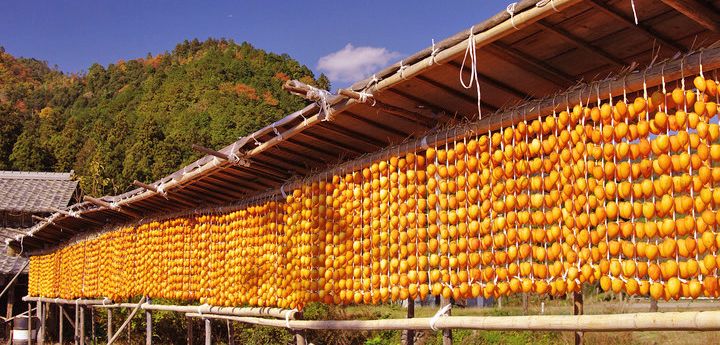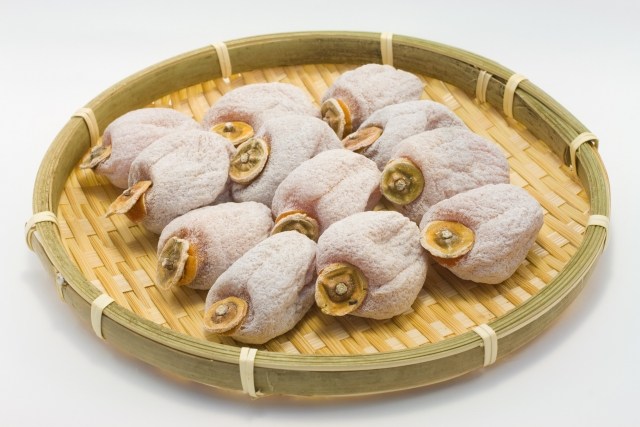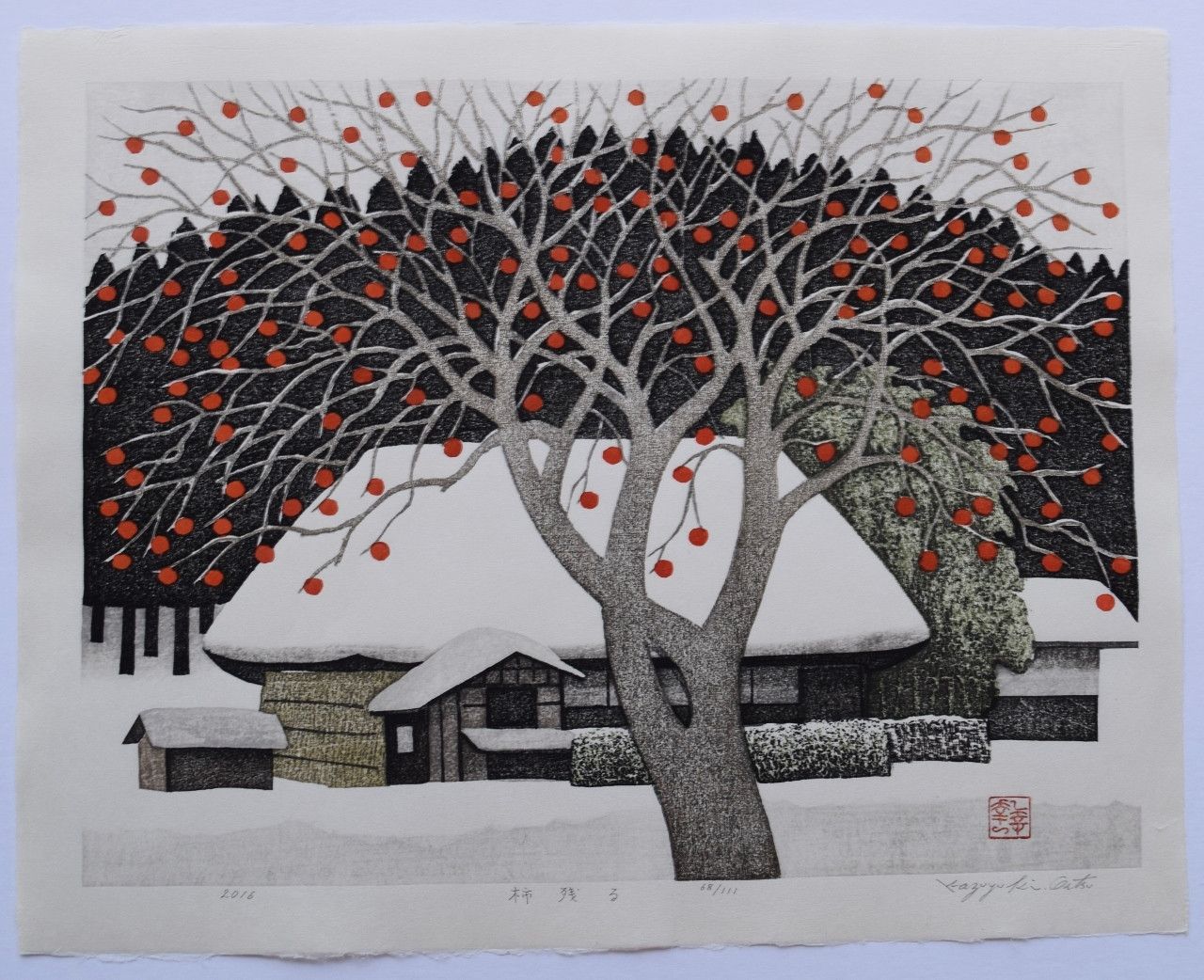Persimmon 2.0 Instructions for use
“Everything is poison, everything is medicine; both determine the dose "
Paracelsus
Surprisingly, after the publication of the article Notes phytochemist. Persimmon is my facebook LS-box just exploded from dozens of posts. For me, this was a real discovery that the "club of persimmon fans" is so great and multiethnic. One of the most frequently asked questions was "Who should not eat persimmon? How much can children eat persimmon? What kind of blockage can there be from persimmon?" etc. Gathering my strength, I wrote another article in which I tried to answer these questions in detail. In addition, if you are interested in how the "knitting taste" of persimmon is associated with fish, that they are treated with tannins and why you can not be afraid of "gastric stone" - I traditionally ask for cat.

In most cases, the stumbling block in persimmon gastronomy is its astringent taste.
For captain John Smith was right in his book of 1624, The Common History of Virginia, when he wrote about an unripe persimmon, "... being collected before it is ready, he will tear off a man's mouth in immense suffering ...".

And although there are lots of ways to get rid of the knitting taste ( see the end of the article ), let me dwell on this phenomenon in more detail and bring some clarity.
About astringency
Speaking about persimmon, it is impossible not to say at least a couple of words about the mechanism of its "knitting action" or tartness. We feel toughness when we try unripe persimmon, drink strong tea / coffee or dry red wine. All of these components contain tannins. And the interaction of tannins with special protein compounds present in the oral cavity forms the above-mentioned taste sensations. These compounds are called mucins. They are the main component of the secretion of all mucous glands.

High-molecular mucin that is adsorbed on the surface serves to lubricate the boundaries of the rubbing surfaces (for example, the oral cavity and food), and the free mucin in the volume of the secretion of the salivary glands is so-called. colloidal stabilizer and regulates the viscosity and elasticity of saliva. Therefore, any food and drinks can interact with saliva proteins both on the surface and in the solution volume (due to physicochemical interactions or changes in the conformation of saliva proteins) and actively influence the composition and rheological properties of saliva.
The mucin molecule (in the saliva there are so-called mucin-1 (molecular weight 250 kDa) and mucin-2 (molecular weight 100 kDa)) is like a comb and consists of the protein part (a solid line of peptides) and short polysaccharide chains consisting from fructose, galactose, N-acetylglucosamines and other sugars. Having a gel-like consistency, these glycoproteins bind a large amount of water and provide uniform lubrication (by lowering the friction coefficient) and moistening the oral cavity. Mucins form a barrier and protect sensitive mucous membranes from drying out and chemical and mechanical effects.

In the normal state, the surface of the tongue and mouth is covered with a uniform thin film of saliva containing mucins. Upon contact with products containing binders (tannins) components, the mucins, like any other proteins (as described above), enter into chemical interaction with tannins. Their solubility in water decreases, aggregation and even precipitation occurs. Those. after contact with tannins, the smooth, glossy surface smeared with mucin-containing saliva begins to resemble a rough sandpaper formed by a multitude of micro-tear. Those. in its simplest use, a tart taste is when the tongue becomes less slippery.
This process is described in an interesting paper by a Sino-Korean team of researchers who created a "tongue emulator" of a plastic hydrogel containing mucin. In the initial state, this object was elastic, with a very low coefficient of friction, and easily slid along an inclined surface. The addition of tannin solution made the hydrogel sticky, forcing the water to lose actively and shrink in volume. The mechanical strength of the "tongue" has increased significantly, the elasticity has decreased, on an inclined plane, he no longer slid. As they say, zadubel ... Researchers did not stop at the results and developed special gloves "for holding fish" (!). The slime that covers fish scales is similar in composition to saliva, which means, the researchers suggested, will also interact with tannin. Gloves were created for testing that isolated the tannin solution on contact. The fish was caught and ... retained.

In Figure E) - a scheme for fishing with the use of "tannino-gloves", F) - the fish is fixed with the help of "tannino-gloves", G) - fishing is failed if a common glove is used.
It would seem that the idea that they are tannins are bad and harmful, the language deprives of its important qualities. And no. In fact, this is a fairly common class of compounds actively used in medicine.
Tannins of plants
In fact, tannins or tannins (tannins) are organic compounds of complex composition, so-called. polyphenols. This is how these compounds look like (for example, tannin powder):
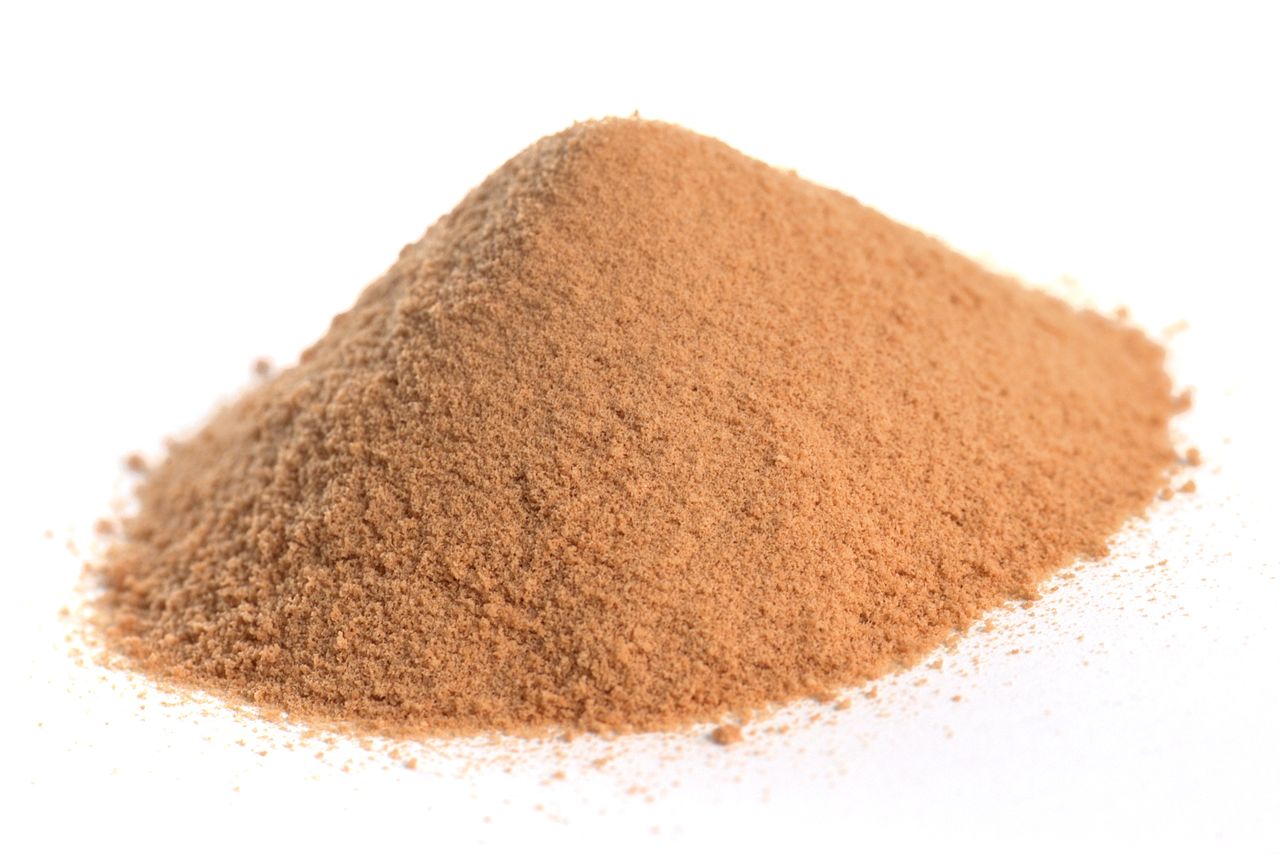
Tannins (from the Latin name of Celtic oak - "tan") are high-molecular polyphenolic compounds, the distinguishing feature of which is the ability to turn raw animal skins into a durable, waterproof and rot-resistant product - the skin. Usually, oak bark was used for this process, which later gave the name to the tanning process and the class of substances (“tannic”). For the first time the term "tannins" was introduced into circulation in 1796 by the French researcher P. Seguin. Tanning is a complex physico-chemical process of formation of a stable structure due to the appearance of hydrogen, covalent and ionic bonds between collagen molecules and phenolic groups of tannins.
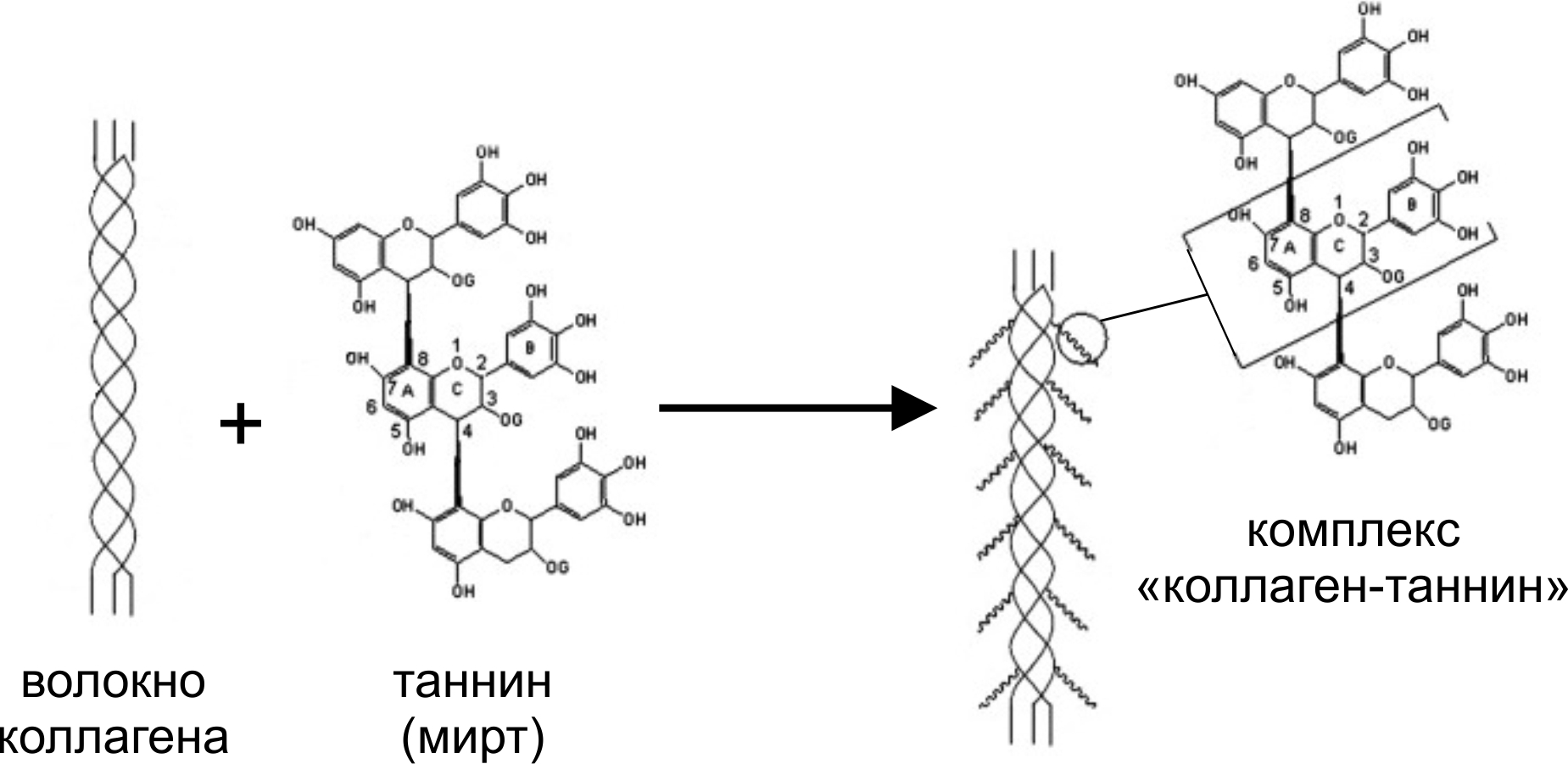
The peculiarity of the process is that tanning occurs only in the case of a sufficiently large size of tannin molecules (molecular weight 500-3000). Low-molecular compounds have an astringent taste, but are not suitable for tanning. According to the most frequently used classification by Freudberg, tannins are divided into two large groups: hydrolyzable and condensed.
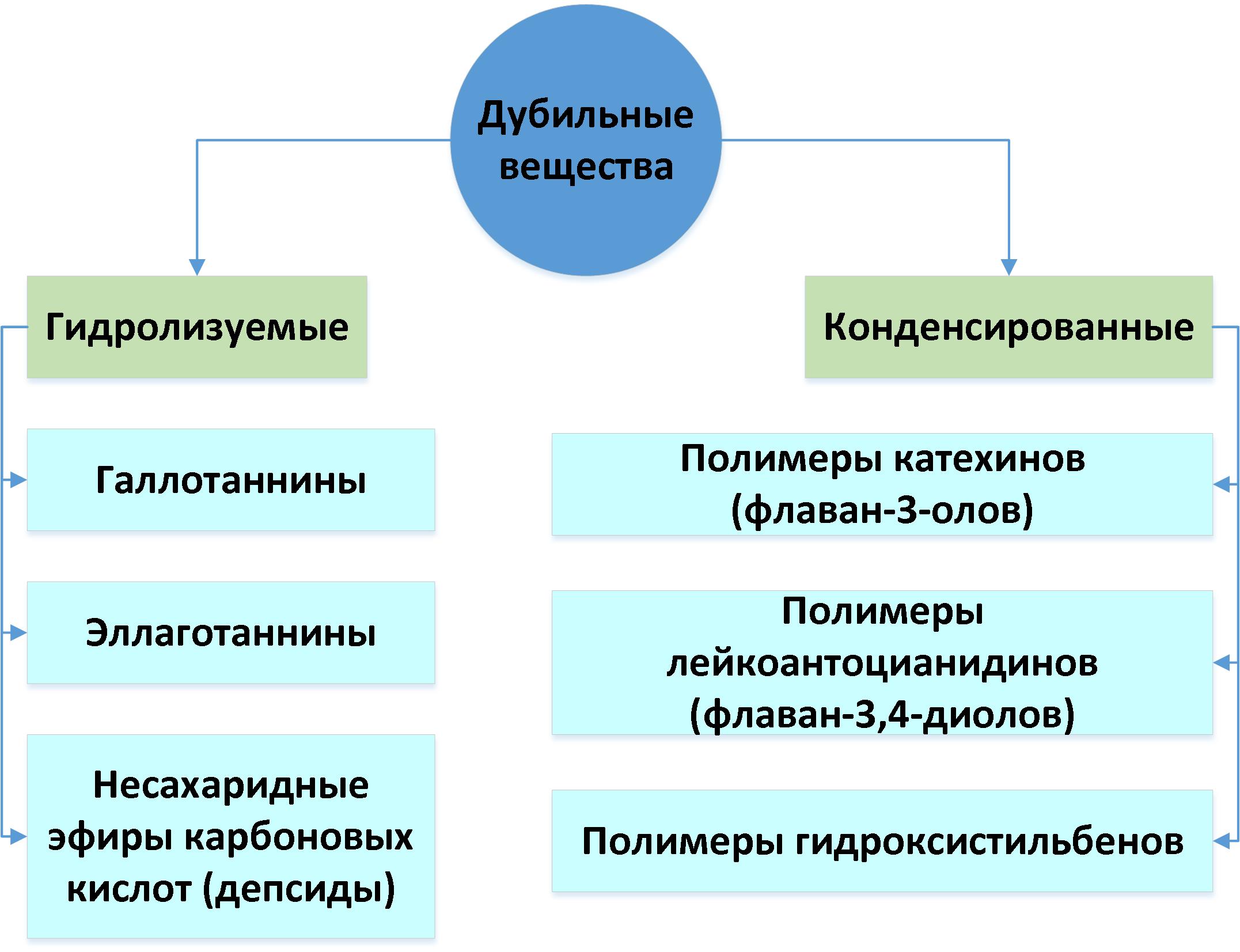
Hydrolyzed tannins under the action of acid or enzymes are hydrolyzed into their constituent parts. But condensed tannins under the action of acids undergo further compaction and condensation, and the resulting red-brown condensation products are called flobaphenes .
As I already mentioned, tannin solutions bind to proteins (as well as alkaloids and heavy metal salts) to form insoluble compounds. Human skin proteins are no exception. Upon contact with protein molecules in the mucous membranes or superficial layers of the skin, tannins fix these molecules and cause them to thicken, forming a film impermeable to water. Their medical use in the form of astringents is based on this, since The film formed on the mucous membranes prevents further inflammation, and, applied to the wound, they coagulate blood and therefore act as local hemostatic agents. Best of all, tannins act as astringents.
Astringents when applied to mucous membranes, skin. wound surfaces cause compaction of the surface layer of the tissue (tanning effect) with a decrease in its permeability due to nonspecific physicochemical changes of colloids of cells, extracellular fluid, mucus, exudate. Interacting with proteins, they form insoluble albuminates (coagulation). Forms a dense elastic film that protects tissues from the effects of irritating substances, reduces pain, contributes to the narrowing of the capillaries, reducing hyperemia, compaction of the vascular wall, reducing the secretion of glands and enzyme activity. Reducing tissue permeability blocks exudation. Reducing the activity of enzymes, drugs extinguish the "fire exchange" in the inflammation. The combination of these effects explains the local anti-inflammatory effect of astringents. Coagulating plasma proteins, they help to stop capillary bleeding. Coagulation of microbial cell proteins provides antimicrobial action.
Externally used to stop small capillary bleeding on the skin, to treat minor burns, such as sunburn, to treat wounds and frostbite (due to the tanning effect). No wonder in the first part of the story about persimmon I mentioned that Koreans treat her for burns and wounds. Actual, the same was used on our latitude, but instead of persimmon they used more accessible oak bark. Inside tannins are used to slow down the strong motility of the gastrointestinal tract resulting from indigestion ( Important! But for people prone to constipation, the situation will only get worse! ), Mouthwash, if there is inflammation in the mouth or gums (bleeding), throat tonsillitis, for washing the stomach in case of diarrhea, against inflammations that form on the mucous membranes of the intestines and stomach. Due to the ability to form insoluble compounds with glycosides, alkaloids and heavy metal salts, tannins are used as antidotes. Hydrolyzed and condensed tannins exhibit high P-vitamin activity and anti-sclerotic effect, which is why doctors often recommend persimmon to those who suffer from varicose veins.

One of the strongest tannins on the content of the plant of our latitudes: a - alder, b - lingonberry, c - bird cherry.
The following herbal preparations can be cited as examples: the Tannin preparation, obtained from the leaves of skumpii tanning and the leaves of sumach tanning leaves, has an astringent, anti-inflammatory and antiseptic effect. It is used in the form of solutions (for washing the stomach for poisoning), lotions for burns, rinses, ointments. Altan and Camilal preparations with antimicrobial, anti-edematous activity and local hemostatic effect are obtained from the alder seedlings . Oak bark and cherry fruit are actively used as an individual astringent and anti-inflammatory agent. Fruits / leaves of bilberry and lingonberry are used in the form of drugs Arfazetin , Mirfazin with hypoglycemic action. Strong black tea has anti-inflammatory action, is used as an antidote for alkaloids poisoning.
Stone in the stomach
The most common horror story of opponents of persimmon is the argument "a stone is formed in the stomach." Well, let's go about the stone to dot the i's, especially since the tannins, the participation of which is here, we have already considered. In general, this is how this very stone describes Wikipedia:
Bezoar, bezoar stone (Pers. بازهر bâzahr "padzahra" - translated as "antidote") - a foreign body in the stomach, dense calculus formed in the gastrointestinal tract when swallowing certain substances of natural or synthetic origin
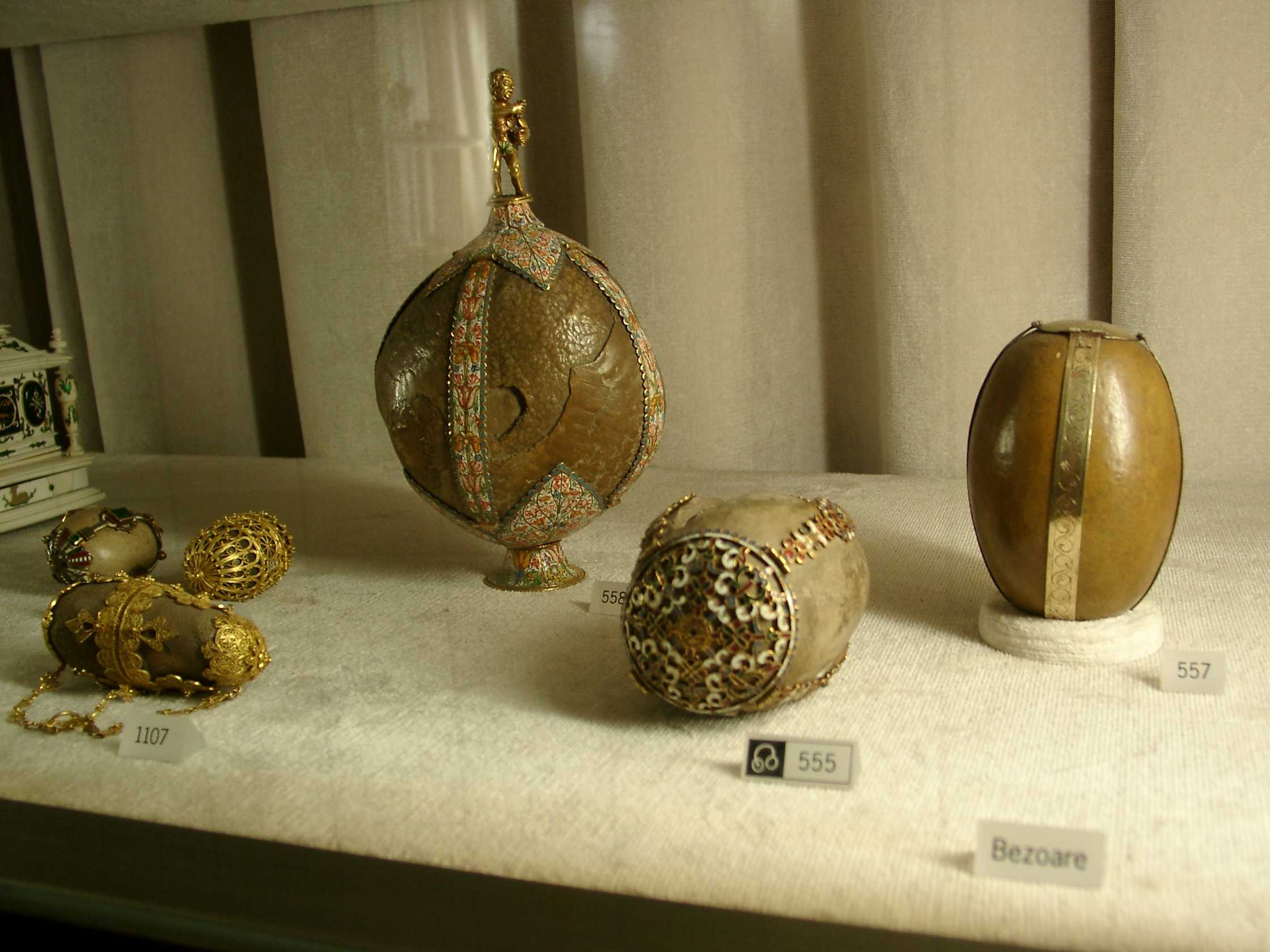
Bezoars have been known since ancient times and were previously highly valued for their properties, since they were thought to possess the power of a universal antidote to any poison. Most often concrements were found in mountain goats, in whose stomachs they were represented as grayish-blue dense formations of wool, mucus and leaves. This animal (in the picture) even got its name from the name of the stone - bezoar goat.
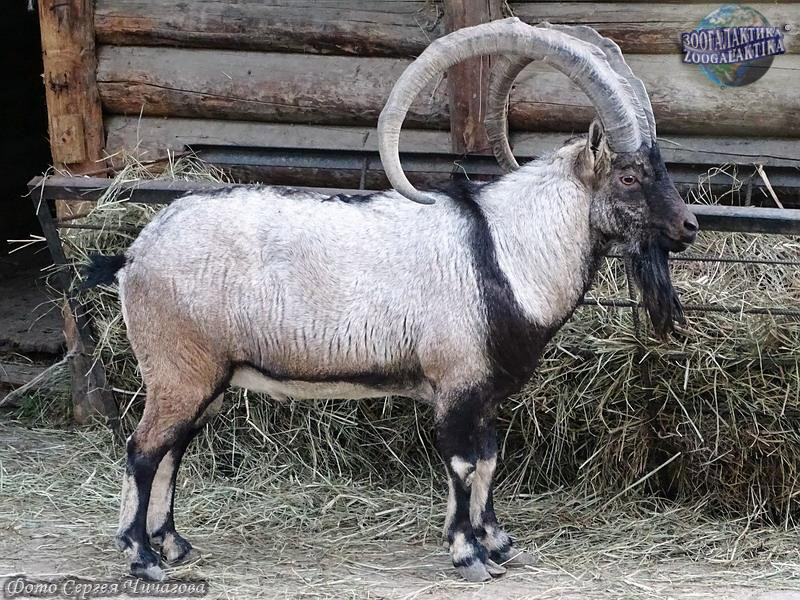
It is believed that bezoar goats are one of the ancestors of modern domestic goats.
Surprisingly, even today (in the world of CRISPR and monoclonal antibodies), people who believe in miracles still remain, and bezoars are quite expensive on the black market. Therefore, the species continues to be under threat due to poachers.
Even more surprising are the real modern prices for the so-called. gall bezoara animals. Especially in China, traditionally living in its own world of alternative medicine.
Bezoars occur mainly in ruminants. In humans, bezoars are relatively rare. In the national gastroenterology, the first mentions of pathology are found at the beginning of the 19th century in the works of the Russian surgeon V.M. Mouse. Gastric stones are rare, in the early 1990s. about 400 cases of the disease have been described.
There is also a pseudo - besoar - some indigestible object that is intentionally introduced into the digestive system for medical purposes (for restoring the volume of the stomach, for example).
Bezoars may have different composition and consistency (loose, dense, firm, elastic). Depending on the type of constituent components, the calculus can be both organic and inorganic. The most common are phytobezoars . They make up to 70% of all bezoars. Formed by eating peels, seeds, rinds of berries and fruits (persimmon, cherry-cherry, hawthorn, grapes, figs, etc.). Vegetable substances (undigested lignin, cellulose, tannins celery, pumpkin peel, grape skin, prunes, raisins, other vegetables and fruits) are gradually overgrown with mucus, fat and mineralized. Concrements have a different consistency, fetid odor, dark green or brown color. There are other varieties - see under the spoiler.
Trichobezoar (pilobezoar) . Ranked second in frequency. They represent a felt-like clumps of hair with impurities of mucus and food particles and are formed with regular hair ingress into the stomach. There are such bezoars in children with schizophrenia who suffer from trichotillomania - obsessive pulling of hair. In addition, they are found in people with mental disorders who bite their hair and hair processing professionals (hairdressers).

From such a "soft toy" was removed from a young girl who lived with the habit of constantly biting her hair ...
Stibobezoary . Formed with frequent consumption of fatty products of animal origin (goat, lamb and beef tallow without heat treatment). Once in the stomach, the food is transformed, compacted and forms fatty stones.
Shellakobezoary . Occur when using in food inedible products of chemical origin (nitrolak, glue BF and polish alcoholics, paint). When entering the stomach, the substance interacts with water and precipitates. Shellac stones have a viscous consistency, slightly rough surface, dark brown color.
Laktobezoar . Formed in newborns, feeding which is carried out by an artificial mixture with a high content of lactose and casein. Premature babies tend to concretions.
Other types of bezoars that are found in isolated cases are mentioned in the scientific literature. Pixebozoarya - the use or swallowing of chewing gum and plasticine by children, ingestion of resin or vara in the stomach. Hemobezoaroids are formed during prolonged swallowing of blood in patients with nasal and esophageal bleeding with portal hypertension and lupus erythematosus. Pharmacobezoar may occur when taking insoluble and insoluble drugs (aluminum hydroxide, activated carbon, etc.). Mixed bees are made of yarn, wool, pieces of wood.
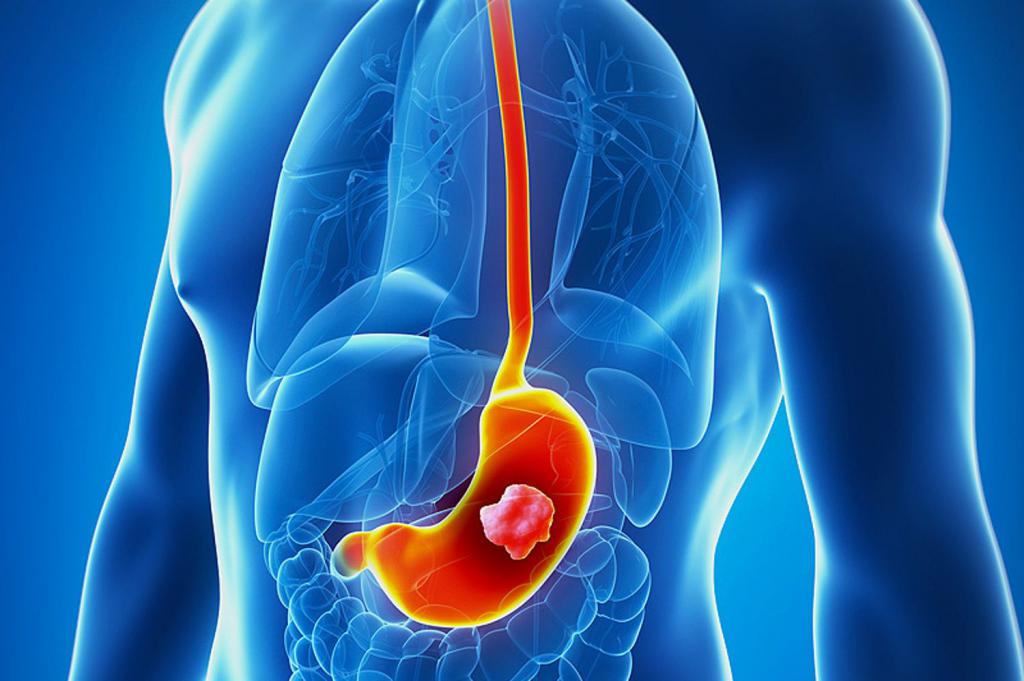
Predisposing factors of phytobezoaces are:
- Disruption of food culture. Poor chewing of coarse-fiber heavy food (+ problems with teeth), swallowing fruit pits
- Insufficient excretion of hydrochloric acid, slow evacuation of the contents into the duodenum due to gastroenterological pathology and impaired gastric motility ( gastroparesis , secretory insufficiency, diabetes and hypothyroidism and related decreased motility)
- Excess reproduction of fungi of the genus Candida ( candidiasis ) in the stomach initiates the formation of fungal bezoars .;
- Surgery on the stomach. Transferred surgical interventions (resection of the stomach, vagotomy) help to reduce secretory function, impaired digestion, the accumulation of hard-to-digest products
- High viscosity of mucus in the composition of the gastric juice (may occur when taking some anti-ulcer drugs)
Not surprisingly, phytobezoars can be formed after eating persimmon and pineapple. This type of calculus is called diospirobezoarami . Clinical manifestations in our latitudes are rare (for we have a persimmon only for the New Year), but in countries where persimmon is grown, it is found quite often. The formation of phytobezoars from persimmon is due to a chemical reaction between the hydrochloric acid of the stomach and flobatannin (see “Tannins of plants”) contained in persimmon. An important role is played in this and tannin persimmon (note my - "Hurmatannin"), with a maximum content in the peel of immature persimmon. The substance was first isolated and studied by Japanese chemists S. Komatsu and N. Matsunami back in 1923. The Japanese isolated phenolic compounds from the juice of immature persimmon and called them shibuol ( shibuol ). Until 1961, its structure was unknown, and accordingly their mechanism of chemical interaction was unclear. In 1961, using the analysis of methanol extracts, it was found that the main component of "hurmatanin" is the substance leukodelphinidin (5,7,3 ', 4', 5'-pentahydroxy-flavan-3,4-diol) -glucoside. The formula for this wonderful substance is below:
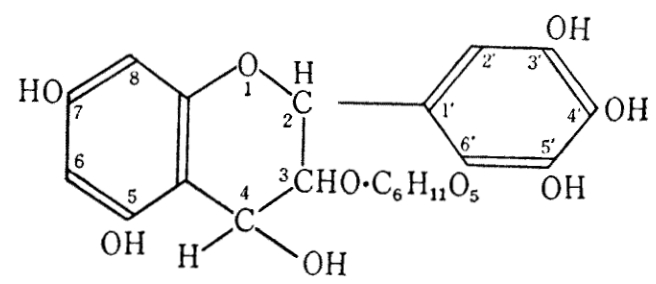
The loss of astringency during the ripening of persimmon or in the case of various methods of converting persimmon fruit binders into sweet ones is interpreted as a decrease in soluble shibuol through molecular condensation. At one time, the Japanese conducted an experiment by adding hydrochloric acid to a suspension of persimmon peel. The coagulum obtained was very loose and did not closely resemble a human bezoar. In this way it was found that the transformation of soluble Shibuol into insoluble is a necessary, but not sufficient condition for the formation of a stone. Some high molecular weight binding agent + mechanical effect on the stomach must also be present.

Stages of obtaining a synthetic gastric stone: 1 - a suspension of persimmon before processing,
2,3 - Early stages of rotation after the addition of hydrochloric acid and flocculant; 4 - After 2 hours of rotation of the system.
When the authors took a suspension of persimmon, added hydrochloric acid and a high molecular weight flocculant ( KONANFLOC ZH-760 , an aromatic polyamide ~ nylon) and additionally subjected to slow rotation to simulate active gastric motility, the result was a synthetically bezoar, quite like a human. It remained to find a source of high-molecular compounds (nylon in the stomach, to put it mildly, a rather rare guest). Here it was assumed that gastric juice and saliva contain a significant amount of viscous substances, in the role of which mucin-1 and mucin-2 mentioned above can be used (see “On Tolerance”). In addition, the rind of persimmon also contains high-molecular compounds that can act as coagulants. The researchers found that the suspension of persimmon in distilled water, without the addition of hydrochloric acid or flocculant showed clearly visible coagulation. In addition, soluble persimmon schibuol precipitates proteins and starch rather well, and insoluble actively adsorbs them. In turn, the Shibuol-protein and Shibuol-starch complexes later also participate in the adhesion of persimmon slices. Those. For the formation of calculus necessarily need a significant amount of high molecular weight organic substances. A mechanism has been proposed as follows:
- When using the immature fruits of persimmon or persimmon knitting varieties, in the stomach, under the action of inorganic and organic electrolytes, a loose coagulate is formed, consisting of fragmented pieces of persimmon. The sources of electrolytes are the persimmon itself and the food that is taken simultaneously with it, as well as gastric juice and saliva.
- Insoluble schibuol, precipitated with hydrochloric acid, various complexes of schibuol (due to adsorption) and other high-molecular compounds, accelerates the coagulation of the suspended persimmon pieces, acting as a kind of binder
- The coagulum becomes dense and gradually dehydrated. Compaction occurs due to kinetic energy, which is released as a result of contraction of the stomach walls and body oscillations in the process of human movement.
And already the traditional " how to be saved ." , , , ("" ), . , . , ( ) / , Nd:YAG (- («YAG», Y 3 Al 5 O 12 ), (Nd) 1064 ). ( ) .
(. Papain) — , , , , . —
, , 50% Coca-Cola , , , 90%. , "" Coca-Cola . , "" Coca-Cola Zero. — , ...

( , ), — .
? — , .
" " , , ( ).
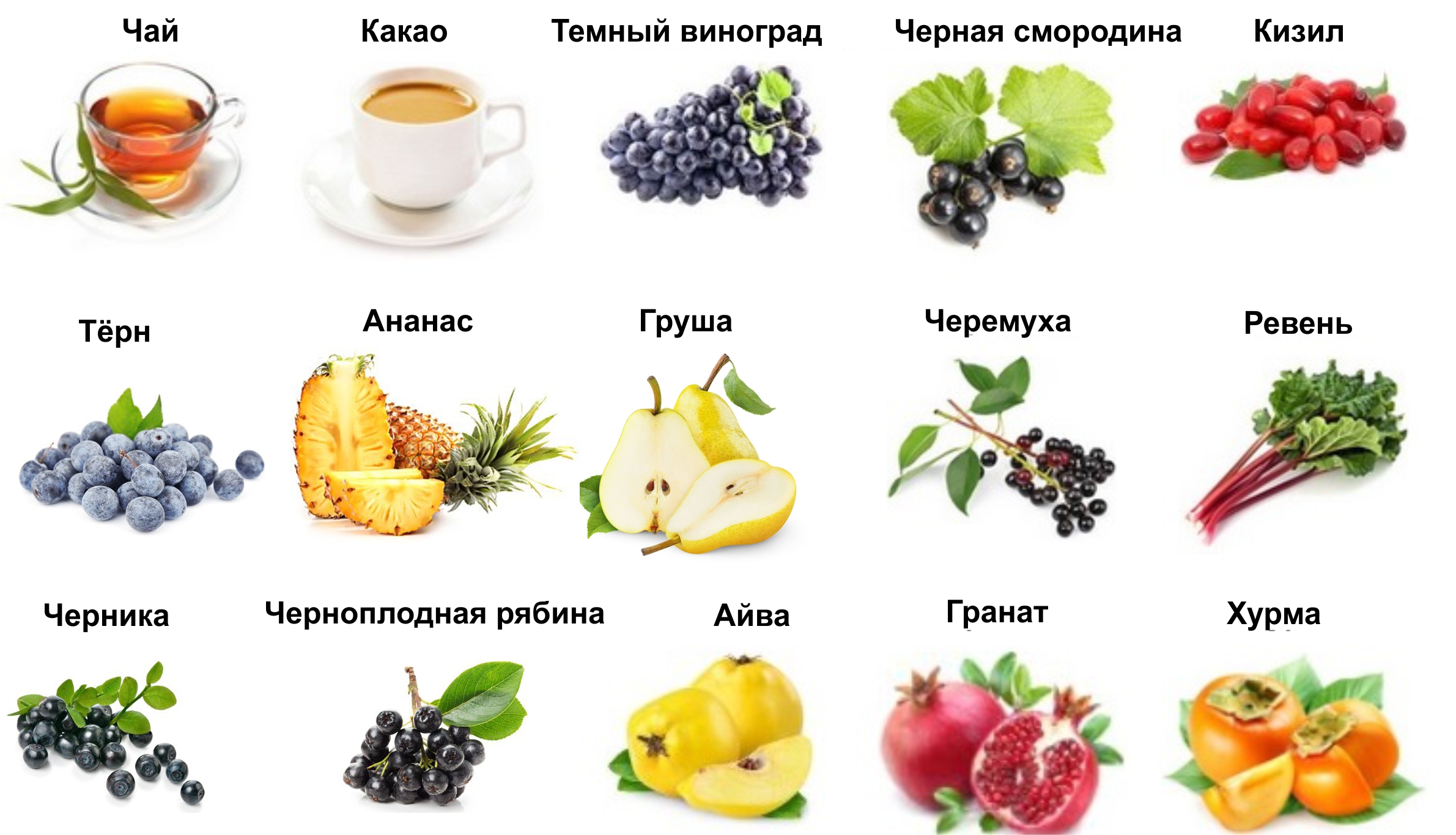
, , , , , , , , , , , , , , , , , , — . "" Journal of Nutrition (aka " ") . ( . " " ). Tannins: Current knowledge of food sources, intake, bioavailability and biological effects Molecular Nutrition and Food Research (" ").
, ) / ) (, ..). , ( + ). -, " — ", — ( ). , ;) , , , , (-, - ).
, " ", ( , — , . " ").
: , , // ( " "). " " , , macedonia - ( ), // . .. , ...
, " / " "" - , ( , ). , , , "" ( hoshigaki ). , — "". ( , "", "" ). — :
" " . "" "" , . 10 . . /. — . ( , - ).
- , , - , ("" ) . ( -> ) , , .
- . , , , . . F301 Persimmon E ( IgE). ( lgE /: <0,1 ; 0,1-0,34 ; 0,35-0,69 ; 0,7-3,49 ; 3,5-17,49 ; >=17,5 ). , < "", — "", .
And fourth. Persimmon is not recommended for insulin-dependent people (type I diabetes). People with type II diabetes (with mild, moderate severity) should eat persimmon with caution. This is due both to the previously mentioned decrease in motility of the gastrointestinal tract recorded in diabetes, and the fact that the fruit contains a considerable amount of sugar. Focus on the fact that the optimal amount of persimmon, which can be eaten at a time = 1 XE ( bread unit ). In the case of persimmon, this is about 50-70 grams, depending on the variety and degree of bedding.
For everyone else - there are no special restrictions, just "listen to your body." The moral of this “fairy tale” is that it is much more effective to eat one persimmon throughout the week than to eat seven pieces at a time.
Sergey Besarab ( Siarhei V. Besarab )
- S. Komatsu N. Matsunami, Mern. Cqlf. Sci. Kyoto Univ., Ser. A 7, 15 (1923)
- Tohoku J. Experimental Formation of Persimmon-bezoar, Exp. Med., 1965, 86, 168-177
- Smith, John. "The Generall Historie of Virginia, New-England, and the Summer Isles." The Heath Anthology of American Literature. Ed. Paul Lauter. 6th edition. Boston: Houghton Mifflin Harcourt Publishing Company, 2009 [1624]
- Ladas, SD; Kamberoglou, D .; Karamanolis, G .; Vlachogiannakos, J .; Zouboulis-Vafiadis, I. (2013). “Systematic review: Coca-Cola can effectively dissolve gastric phytobezoars as a first-line treatment”. Alimentary Pharmacology & Therapeutics. 37 (2): 169–173
- Iwamuro M .; Okada H .; Matsueda K .; Inaba T .; Kusumoto C .; Imagawa A .; Yamamoto K. (2015). "Review of the diagnosis and management of gastrointestinal bezoars". World Journal of Gastrointestinal Endoscopy. 7 (4): 336–345
- Christos Plataras; Nektarios Sardianos; Stephanos Vlatakis; Konstantinos Nikas (2014). “An unusual cause of small bowel obstruction in children: lentil soup bezoar”. BMJ Case Rep. 2014; 2014: bcr2013203316
- Chisholm, EM; Leong, HT; Chung, SC; Li, AK (1992). "Phytobezoar: An uncommon cause of small bowel obstruction." Annals of the Royal College of Surgeons of England. 74 (5): 342–344
- Zhang, RL; Yang, ZL; Fan, BG (2008). "Huge gastric disopyrobezoar: A case report and review of the literatures." World Journal of Gastroenterology. 14 (1): 152–154.
- Tannins: Current knowledge, bioavailability and biological effects
')
Source: https://habr.com/ru/post/433826/
All Articles

